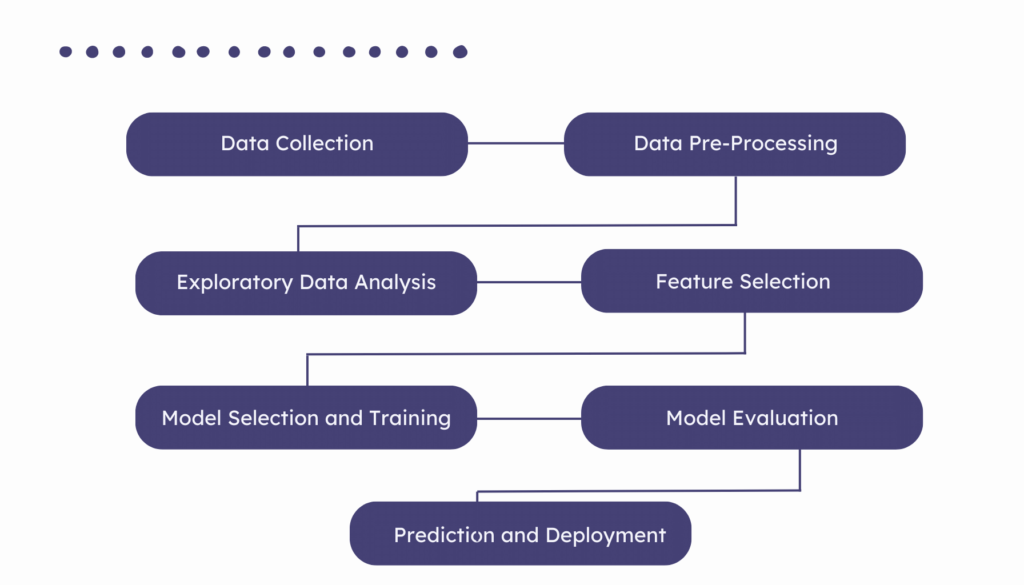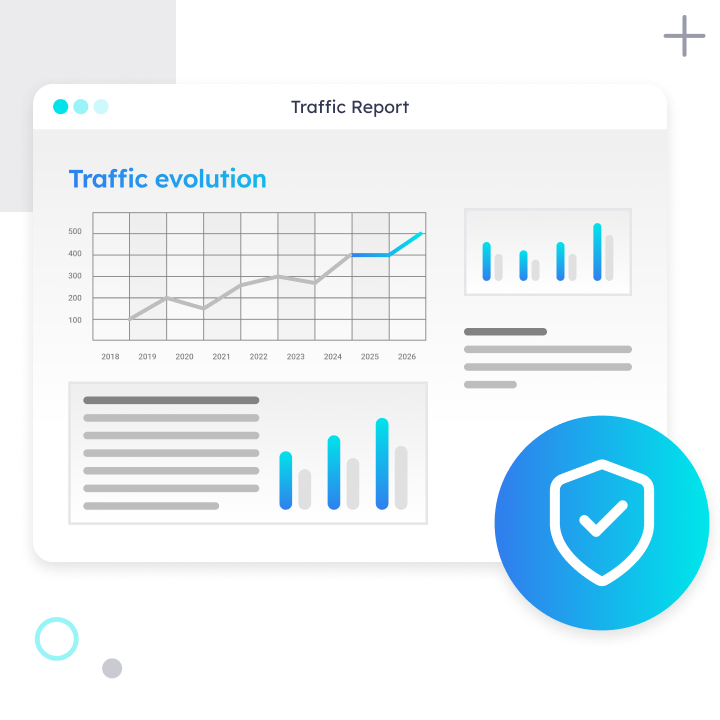
Advanced predictive analytics software encompasses a range of powerful features and capabilities. It incorporates cutting-edge machine learning algorithms that can learn from patterns in data and make predictions with a high degree of accuracy. With the ability to process large volumes of complex data, this software can help you make sense of the ever-increasing amounts of information available.
In the realm of data analysis, no code data analysis refers to the practice of performing complex analytical tasks and deriving insights from data without the need for traditional programming or coding skills. It provides you, regardless of your technical background, with user-friendly tools and platforms that simplify the data analysis process.
No code data analysis stands in contrast to traditional data analysis approaches that typically involve writing code in programming languages such as Python or R. With no code data analysis, the emphasis is on visual interfaces, drag-and-drop functionality, and intuitive workflows that allow users to interact with data directly and perform analysis tasks without writing a single line of code.
What is Predictive Analytics Software
Predictive analytics refers to the practice of using historical data and statistical modeling techniques to make predictions or forecasts about future events or outcomes. It is a subfield of data analytics that utilizes various algorithms and methodologies to analyze past patterns and trends in data and apply them to make informed predictions about future behavior.
The process of predictive analytics typically involves several stages:
- Data Collection: Relevant data is gathered from various sources, such as databases, data warehouses, or external datasets. This data may include variables or features that are believed to be significant in predicting the desired outcome.
- Data Pre-Processing: The collected data is cleaned, transformed, and formatted to ensure its quality and consistency. This may involve removing duplicate entries, handling missing values, and normalizing or scaling the data.
- Exploratory Data Analysis: This stage involves exploring the data to gain insights and understand the relationships between variables. Data visualization techniques and statistical methods are often used to identify patterns, correlations, or anomalies.
- Feature Selection: Not all variables in the dataset may be relevant for predictive modeling. Feature selection techniques help identify the most informative features that have the strongest relationship with the outcome variable. This helps to reduce noise and improve the accuracy of predictions.
- Model Selection and Training: Various predictive modeling algorithms are available, such as linear regression, decision trees, random forests, support vector machines, or neural networks. The choice of algorithm depends on the nature of the data and the prediction task. The selected algorithm is trained on historical data, with the goal of learning the underlying patterns and relationships between the features and the outcome.
- Model Evaluation: The trained model is evaluated using performance metrics such as accuracy, precision, recall, or area under the curve (AUC). Evaluation helps assess the model’s ability to generalize to unseen data and its predictive power.
- Prediction and Deployment: Once the model is deemed satisfactory, it can be used to make predictions on new, unseen data. The model takes input variables and produces predicted outcomes or probabilities based on the learned patterns. The predictions can be integrated into operational systems or used for decision-making purposes.
Predictive analytics finds applications in various fields, including finance, marketing, healthcare, risk assessment, fraud detection, supply chain management, and customer relationship management. By implementing predictive analytics you can gain valuable insights into future trends, make more informed decisions, and improve overall business performance.

The Role of Machine Learning in Advanced Predictive Analytics
At the core of predictive analytics software lie machine learning algorithms. These algorithms enable the software to automatically learn from historical data and make predictions or classifications on new, unseen data. Machine learning algorithms can be broadly categorized into two types:
- Supervised Learning: In supervised learning, the software learns from labeled examples, where each data point is associated with a known outcome or target variable. The software uses these examples to build a predictive model that can accurately predict the outcome for new, unseen data. Examples of supervised learning algorithms include linear regression, decision trees, and support vector machines.
- Unsupervised Learning: Unsupervised learning algorithms are used when the data is unlabeled or lacks explicit target variables. The software analyzes the patterns, relationships, and structures within the data to discover hidden insights. Common unsupervised learning algorithms include clustering algorithms, such as k-means and hierarchical clustering, and dimensionality reduction techniques, such as principal component analysis (PCA) and t-SNE.
Free template: CRO audit checklist
Discover everything you need to start identifying drop-offs and increase conversions.

Overcoming Challenges in Implementing Advanced Predictive Analytics Software
Data Quality and Data Pre-Processing Challenges
Implementing advanced predictive analytics software entails addressing data quality and pre-processing challenges. Some of the key challenges include:
- Data Incompleteness: In real-world scenarios, datasets often contain missing values or incomplete records. Advanced predictive analytics software employs techniques such as data imputation, where missing values are estimated based on the available information. Imputation methods include mean imputation, regression imputation, or sophisticated techniques like multiple imputation.
- Data Cleaning: Datasets may contain outliers, noise, or inconsistent entries that can impact the accuracy of predictive models. Advanced software provides tools to identify and handle outliers, employ filtering techniques, and perform data-cleansing operations. This ensures that the data is free from anomalies and errors, improving the quality of the results obtained from the predictive models.
- Data Integration: Combining data from multiple sources, such as different databases or external APIs, can pose integration challenges due to variations in data formats or structures. Advanced predictive analytics software offers data integration capabilities to harmonize and transform diverse data sources into a unified format suitable for analysis.
Dealing with Large-Scale and Complex Datasets
Advanced predictive analytics software needs to handle large-scale and complex datasets efficiently. Some considerations include:
- Scalability: With the exponential growth of data, scalability becomes crucial. Software solutions with distributed computing capabilities allow for processing and analyzing large volumes of data by distributing the workload across multiple machines or clusters.
- Performance Optimization: Techniques like parallel processing, data partitioning, and optimization algorithms are employed to enhance the performance of predictive analytics software when dealing with massive datasets. These techniques ensure efficient computation and reduce processing time, enabling you to derive insights and predictions in a timely manner.
- Dimensionality Reduction: High-dimensional datasets pose challenges in terms of computational complexity and overfitting. Advanced software incorporates dimensionality reduction techniques, such as principal component analysis (PCA) or feature selection algorithms, to reduce the number of variables while retaining the most informative features for modeling purposes.

Addressing Privacy and Ethical Considerations
As we handle sensitive customer data, addressing privacy and ethical considerations is paramount. Advanced predictive analytics software takes the following aspects into account:
- Data Anonymization: To protect individuals’ privacy, anonymization techniques are applied to remove personally identifiable information (PII) from the data. This ensures that the analysis is conducted on aggregated or de-identified data, minimizing the risk of privacy breaches.
- Compliance with Regulations: Advanced predictive analytics software adheres to data protection regulations such as the General Data Protection Regulation (GDPR) or industry-specific regulations. It provides functionalities like data access controls, encryption, or auditing capabilities to ensure compliance with privacy regulations.
- Ethical Use of Predictive Models: There is an increasing focus on the ethical use of predictive analytics models to avoid bias, discrimination, or unfair practices. Advanced software incorporates mechanisms to assess and mitigate biases in the data, as well as interpretability features to understand the factors contributing to predictions and ensure fairness and transparency.
Pathmonk Accelerate: Predictive Analysis to Increase Your Web Conversions
Pathmonk Accelerate is an AI-powered CRO tool that leverages predictive analysis to serve personalized experiences to your website users. With Pathmonk Accelerate, you can increase your website conversions, leads, purchases, demos booked, downloads, and so on by +50% on average.
Increase +180%
leads
demos
sales
bookings
from your website with AI
Get more conversions from your existing website traffic delivering personalized experiences.

This is how Pathmonk Accelerate’s predictive analytics software works:
- Data Collection and Behavioural Analysis: Pathmonk Accelerate collects and analyzes various types of data from website visitors, including behavioral data, session data, and conversion data, to gain insights into visitors’ engagement and identify patterns. This data is collected without using cookies, ensuring it complies with all privacy regulations.
- User Profiling: Advanced analytics algorithms within Pathmonk Accelerate analyze the collected data to create user profiles. These profiles contain information about visitors’ behavior, preferences, demographics, and interactions with the website.
- Predictive Modeling: Pathmonk utilizes predictive modeling algorithms to forecast and predict user behavior and conversion likelihood. By analyzing historical data and user profiles, the software can identify potential conversion opportunities and predict the likelihood of a visitor converting into a customer.
- Personalization and Targeting: Based on the insights derived from advanced analytics, Pathmonk enables personalized messaging and targeting with tailored micro-experiences. It uses machine learning algorithms to segment visitors and deliver tailored content, offers, reviews, or recommendations to enhance their experience and increase the likelihood of conversion.
- Reporting and Visualization: Pathmonk presents the results of advanced analytics in easy-to-understand reports and visualizations. It provides dashboards and analytics tools that allow you to monitor key metrics, track performance, and make data-driven decisions.
If you want to see our predictive analytics software in action, check out our interactive demo.
Conclusion
By harnessing the capabilities of advanced analytics, you can gain a deep understanding of visitor behavior, identify conversion opportunities, and make data-driven decisions to enhance your web presence. Pathmonk Accelerate, with its data collection and profiling capabilities, empowers you to create personalized experiences and deliver targeted messaging to engage visitors at a higher level.
Through advanced behavioral analysis and predictive modeling, Pathmonk will anticipate visitor intent and predict conversion likelihood. This empowers you to tailor your strategies, content, and offers to individual visitors, ultimately increasing the chances of conversion and driving revenue growth.








